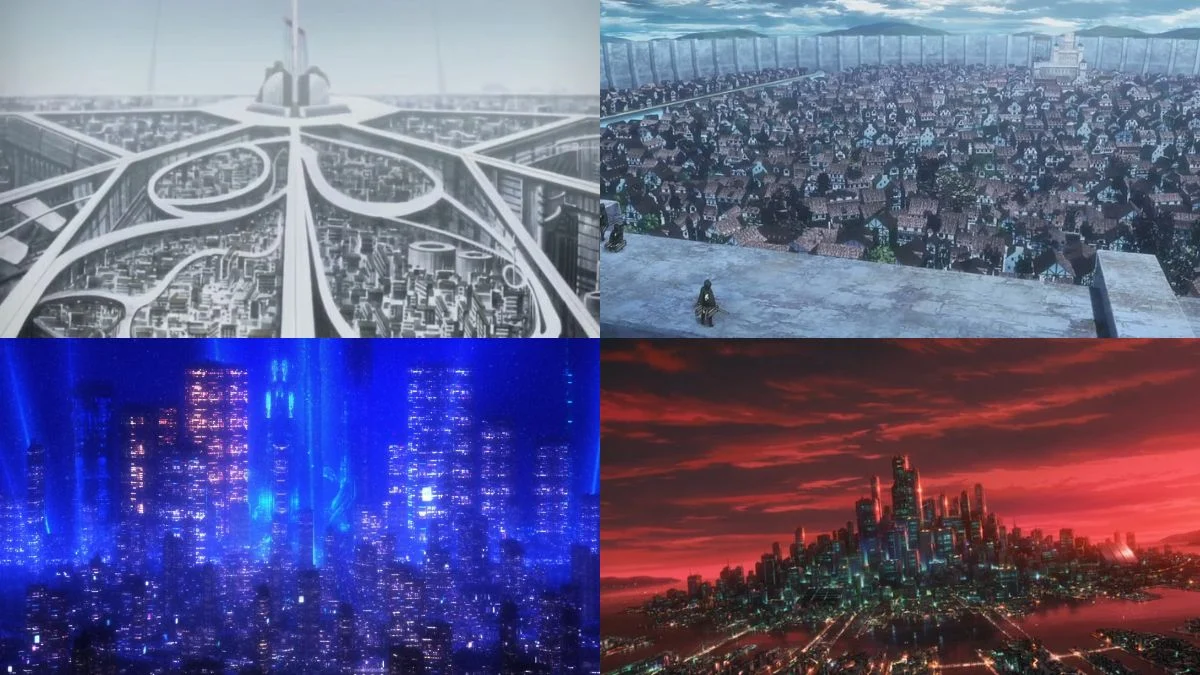
Many anime series create incredibly detailed worlds that feel real, complete with cities, governments, and natural environments that all follow consistent rules. This list showcases some of the most impressive of these settings, focusing on their infrastructure, technology, and geography – places you can almost picture yourself exploring. You’ll discover everything from carefully planned cities and sprawling slums to space routes and massive structures, all of which influence the lives of the characters and the stories they’re a part of. Each entry provides specific details about how these places work and why their unique systems are important to the narrative.
Treasure Town in ‘Tekkonkinkreet’ (2006)
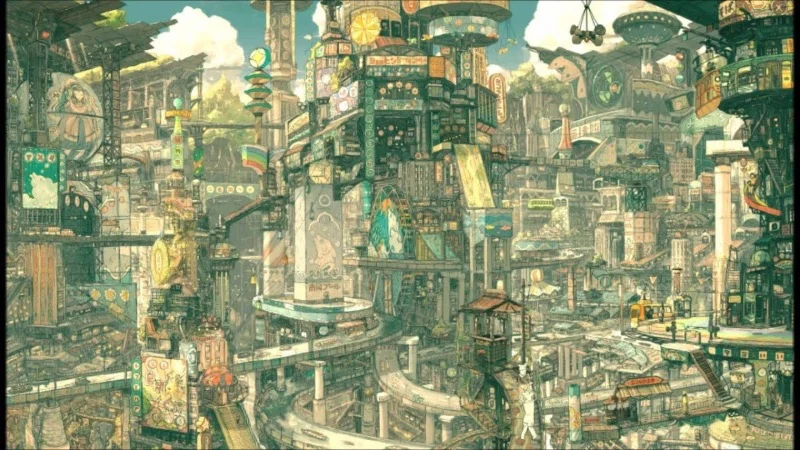
Treasure Town is a bustling city on the coast, inspired by older Japanese neighborhoods. It’s characterized by a maze of power lines and tight alleyways. The city combines raised highways with colorful, hand-painted signs advertising local businesses and marking gang territory. Kids navigate the city by using rooftops and empty spaces as shortcuts. However, new development plans are changing the area, potentially damaging historic neighborhoods and creating conflict between city officials and the people who live there.
Promepolis in ‘Promare’ (2019)
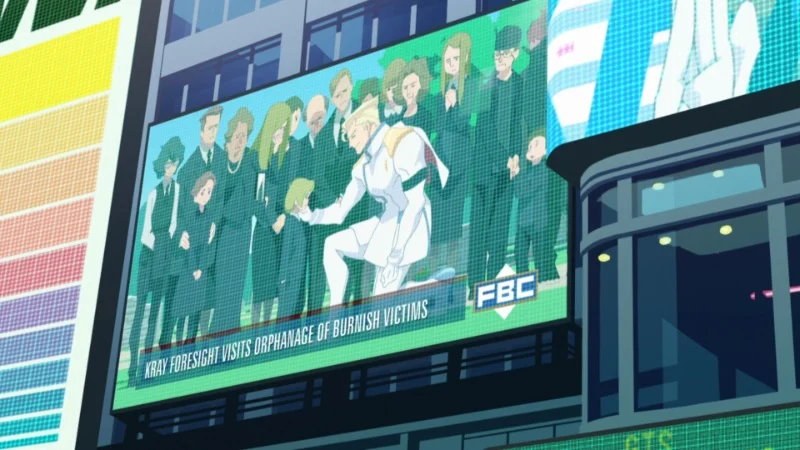
Promepolis was built as a safeguard after a series of unexpected fires changed how cities approach safety. Firefighting robots launch from dedicated hangars onto broad streets made for quick emergency access. The city runs on glowing crystalline fuel, with its energy lines visible throughout, powering everything. A central, imposing administrative tower houses the city’s governing body, responsible for monitoring and managing crises.
The Hole and the Sorcerer World in ‘Dorohedoro’ (2020)
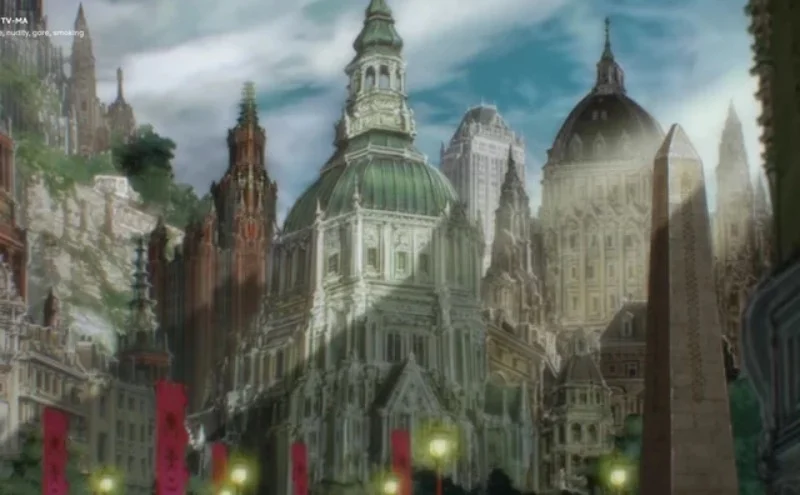
The Hole is a rundown industrial area filled with abandoned factories, makeshift homes, and pollution. Strange doorways lead to a magical realm, causing problems with crime and unexpected intrusions. The local community relies on small clinics and shops to deal with injuries and mishaps caused by magic. Poor waste disposal and air quality significantly impact daily life for residents, influencing where they go and how they work.
Romdeau in ‘Ergo Proxy’ (2006)
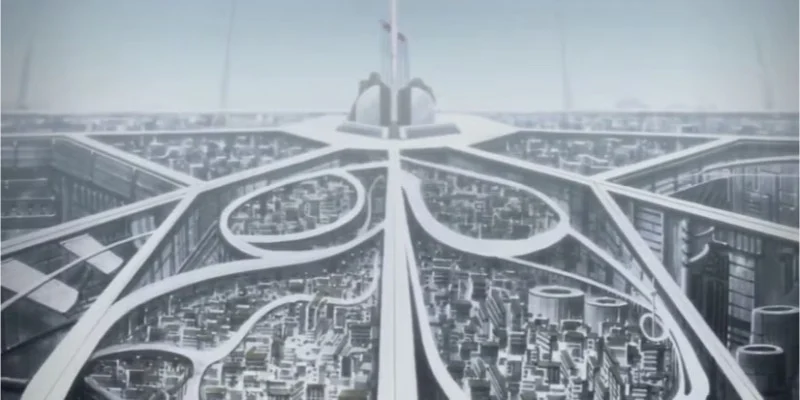
As a total cinema fanatic, I picture Romdeau as this incredible, self-contained city built under a massive dome. Everything revolves around a central hub that controls who lives there and what everyone gets. People depend on these robotic helpers, AutoReivs, to get through the day, and the city keeps track of where everyone is going. Supplies come in through sealed tunnels, but it’s super strict about keeping the outside world out – everything’s quarantined. The city constantly broadcasts messages to keep things calm and orderly, and the main focus is always on keeping the dome itself in perfect working order. It’s a fascinating setting, honestly!
Orth and the Abyss in ‘Made in Abyss’ (2017–2022)
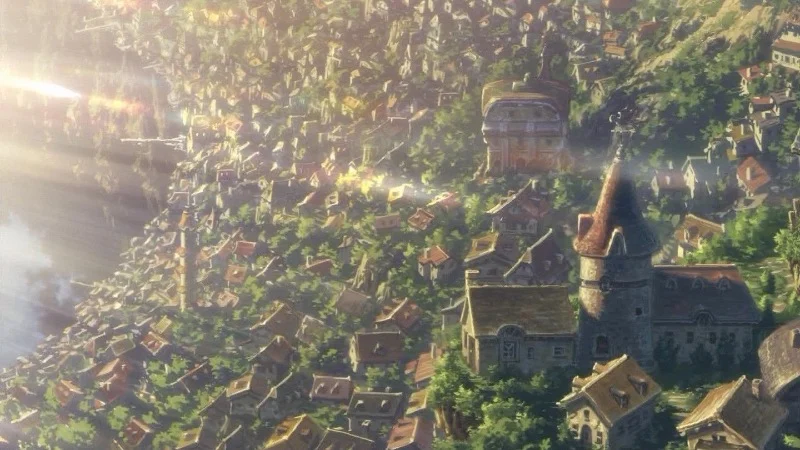
The city of Orth is built around a massive, deep chasm called the Abyss. The city’s main industry is exploring the Abyss for ancient artifacts. Powerful guilds control access, providing explorers with supplies and bases around the chasm’s edge. Descent into the Abyss follows established routes through distinct layers, each with its own unique atmosphere and lifeforms. Because of the dangers of ascending from the depths, a well-understood pattern of illness guides rescue efforts and the creation of safety equipment like ropes and harnesses.
Shiganshina and the Walls in ‘Attack on Titan’ (2013–2023)
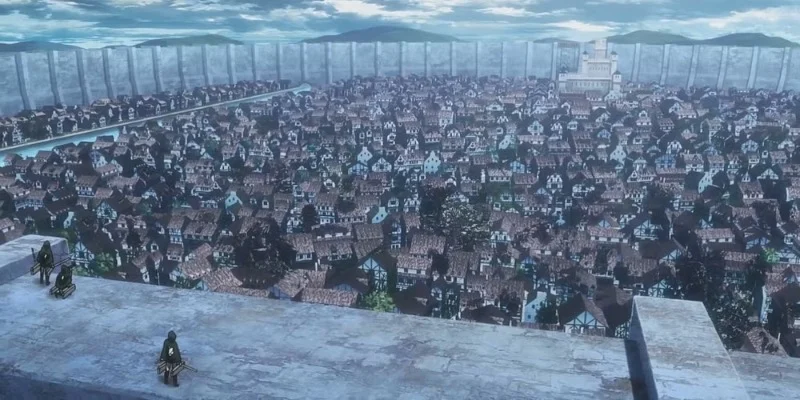
Shiganshina District is protected by a series of three concentric walls. Gates on each wall face north, south, east, and west, and the walls are designed with outward curves to funnel enemies into kill zones. Soldiers use gas-powered gear to move quickly, so storage, refueling, and barracks are located near their patrol routes. Farms are located inside the walls to ensure a steady food supply within the protected area.
Amestris in ‘Fullmetal Alchemist: Brotherhood’ (2009–2010)
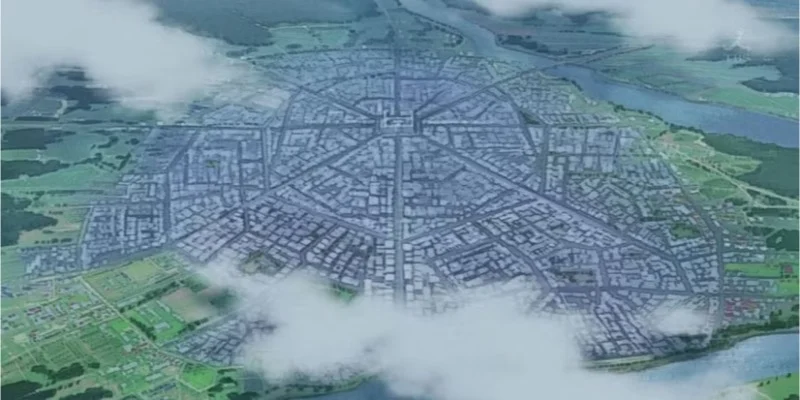
Amestris is a highly centralized country with a railway system that connects the capital city to all its borders. The way the country is divided into regions actually follows the pattern of a massive magical array built into the land through its cities and public works. The military controls important research facilities and bases, which give them power over different areas. Fighting at the borders affects where supplies go and where fortresses are built to protect important mountain passes.
Mars and the Gate System in ‘Cowboy Bebop’ (1998–1999)
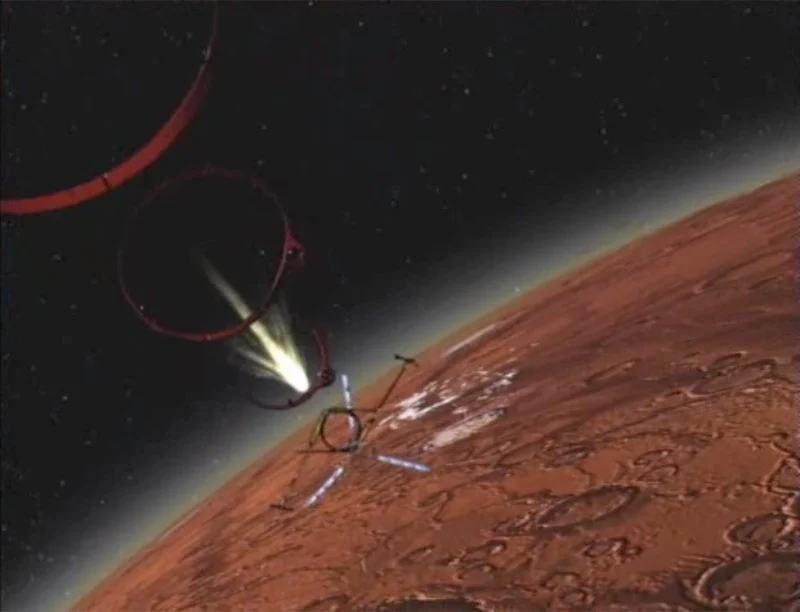
Our solar system uses special ‘Astral Gates’ to allow fast travel between planets and moons. Mars has cities that have been transformed to be more Earth-like, with both enclosed, domed areas and open-air districts. These cities connect to major space shipping centers. Spaceports handle all the necessary services like customs checks, bounty hunter records, and moving cargo, supporting independent space crews. Constant work is being done to control the weather and maintain the environment, ensuring these settlements remain livable.
Tokyo under Sibyl in ‘Psycho-Pass’ (2012–2019)
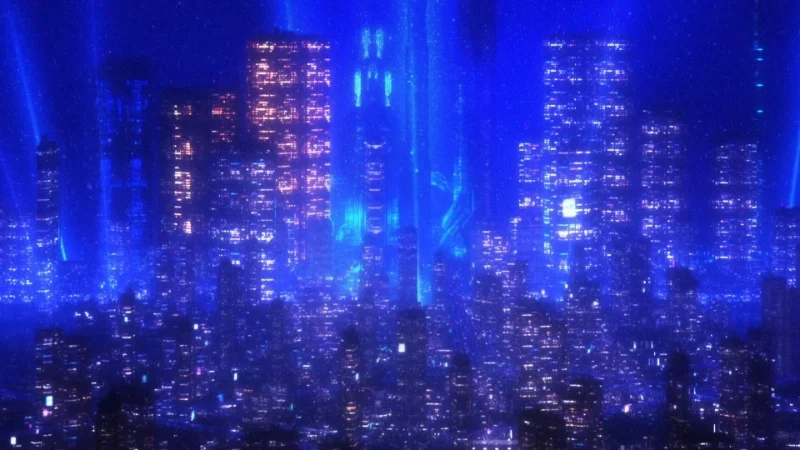
Tokyo’s safety relies on the Sibyl System, a technology that monitors people’s mental states to predict criminal behavior. Police officers use equipment connected to a network of scanners, allowing them to decide when to use force based on real-time data. Throughout the city, there are centers for mental health support, drone surveillance, and kiosks that quickly assess citizens. The system also guides people toward specific jobs and educational paths based on detailed profiles, which are then used to improve city management.
The City in ‘Blame!’ (2017)
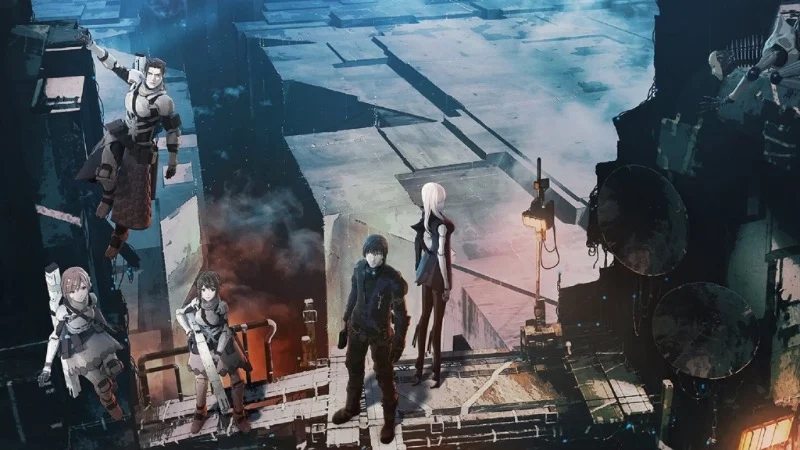
The City is a massive, planet-sized structure built by robots that no longer respond to human control. These robots continue to build endless hallways and rooms following old, forgotten instructions, creating a confusing maze. Safe areas are protected by security systems that require both a keycard and a DNA scan to open the gates. Food and water are produced automatically in isolated sections, and these systems can be shut down or redirected at any time without warning.
Niihama in ‘Ghost in the Shell’ (1995)
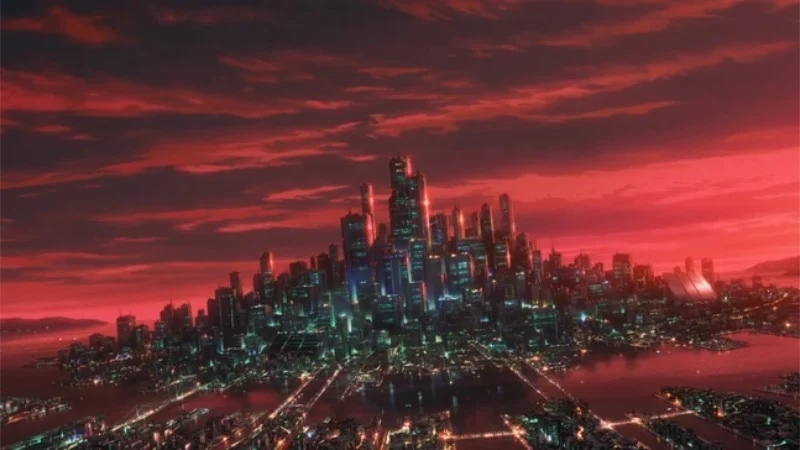
Niihama is a bustling city of ports and canals where people commonly enhance their bodies with cybernetics. A vast network connects every part of the city, allowing law enforcement to access information and investigate remotely. The city is a mix of corporate buildings and residential areas, all linked by a high-speed fiber optic network running beneath the streets and waterways. Advanced technologies like cloaking, cybernetic brains, and prosthetic limbs are seamlessly integrated into everyday life, affecting how people travel and communicate.
Neo-Tokyo in ‘Akira’ (1988)
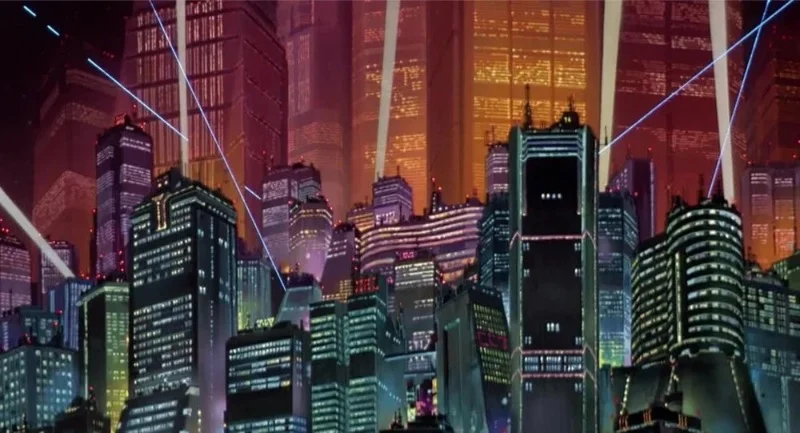
As a huge fan of dystopian futures, I always picture Neo-Tokyo as this sprawling, rebuilt city rising up around construction zones and highways after some massive disaster reshaped the bay. It’s broken down into these really distinct areas – you’ve got the biker gangs owning certain routes, hidden black markets, and these lively student districts packed with schools and arcades. But underneath it all, there’s this sense of control – secret government labs connected to military bases by secure tunnels. It feels like a city constantly on the edge, ruled by emergency laws, with protests in the streets and riot police everywhere.
The Solar System in ‘Legend of the Galactic Heroes’ (1988–1997)
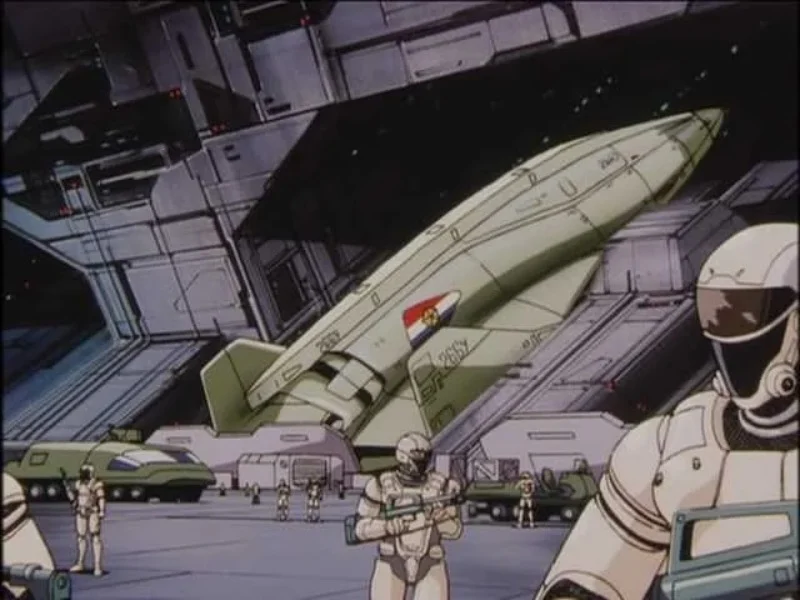
Across the galaxy, two major powers have emerged: the Galactic Empire and the Free Planets Alliance. Their fleets travel along established routes, and heavily defended strongholds like Iserlohn control key passages for trade and military movement. Peaceful planets focus on producing food, building ships, and gathering information to support ongoing conflicts. Meanwhile, governments establish taxes and draft citizens, shaping how populations spread throughout the stars.
The Megastructure and Sidonia in ‘Knights of Sidonia’ (2014–2015)
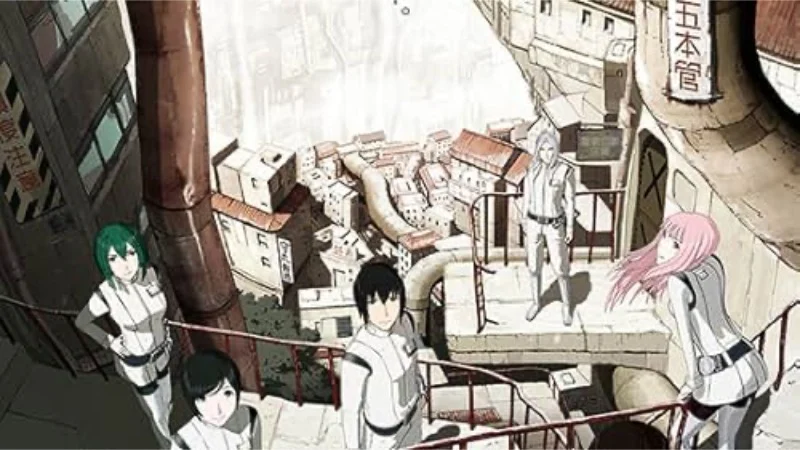
The Sidonia is a massive spaceship carrying the last of humanity. It’s designed for long-term survival, with onboard farms, water recycling systems, and asteroid mining facilities. The ship is defended by giant robots controlled by pilots, launched from bays built into the ship’s outer structure. To manage population and resources, the Sidonia uses cloning, a form of artificial photosynthesis, and regular emergency training. Crews venture outside to collect resources from space debris, while inside, the ship creates artificial gravity and simulates normal day-night cycles.
The Valley and the Sea of Decay in ‘Nausicaä of the Valley of the Wind’ (1984)
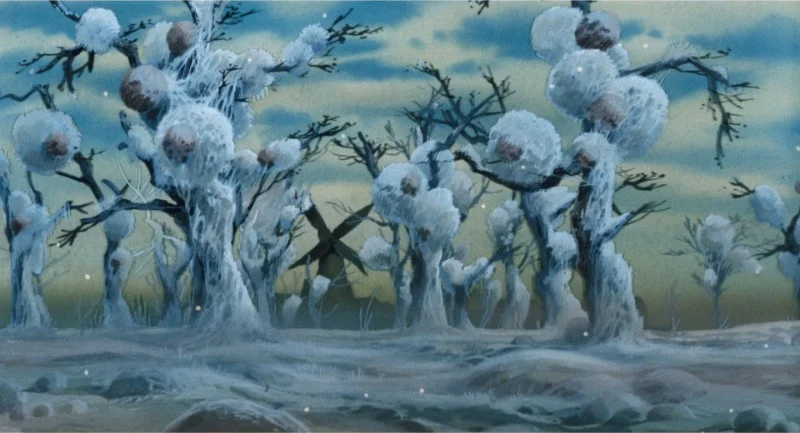
The Valley is located near a forest of special fungi that cleans the soil, though it takes a long time. Wind turbines provide power for local mills and gliders, and the cliffs naturally channel the wind, making it useful for travel. When exploring the dangerous ‘Sea of Decay,’ people always wear masks and protective clothing. Nearby kingdoms compete for valuable resources and the best trade routes, influencing where people live and how goods are transported along safer paths.
Tell us about your favorite anime settings – whether it’s a whole world or just a cool city! Let’s share discoveries and see what everyone else loves.
Read More
- Silver Rate Forecast
- Gold Rate Forecast
- Красный Октябрь акции прогноз. Цена KROT
- MSCI’s Digital Asset Dilemma: A Tech Wrench in the Works!
- Dogecoin’s Big Yawn: Musk’s X Money Launch Leaves Market Unimpressed 🐕💸
- Bitcoin’s Ballet: Will the Bull Pirouette or Stumble? 💃🐂
- Guardian Wealth Doubles Down on LKQ Stock With $1.8 Million Purchase
- Binance and Botim Money Join Forces: Crypto in the UAE Gets a Boost-Or Does It? 🚀
- Twenty One Capital’s NYSE debut sees 20% fall – What scared investors?
- Monster Hunter Stories 3: Twisted Reflection gets a new Habitat Restoration Trailer
2025-10-30 05:15